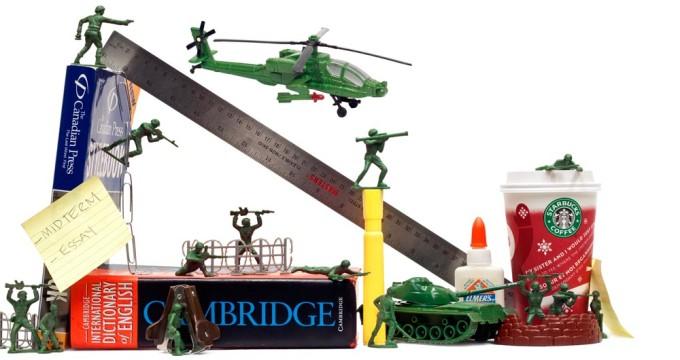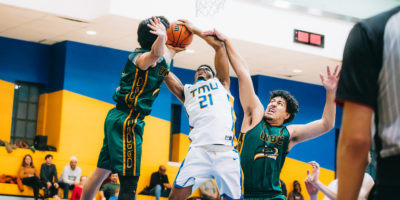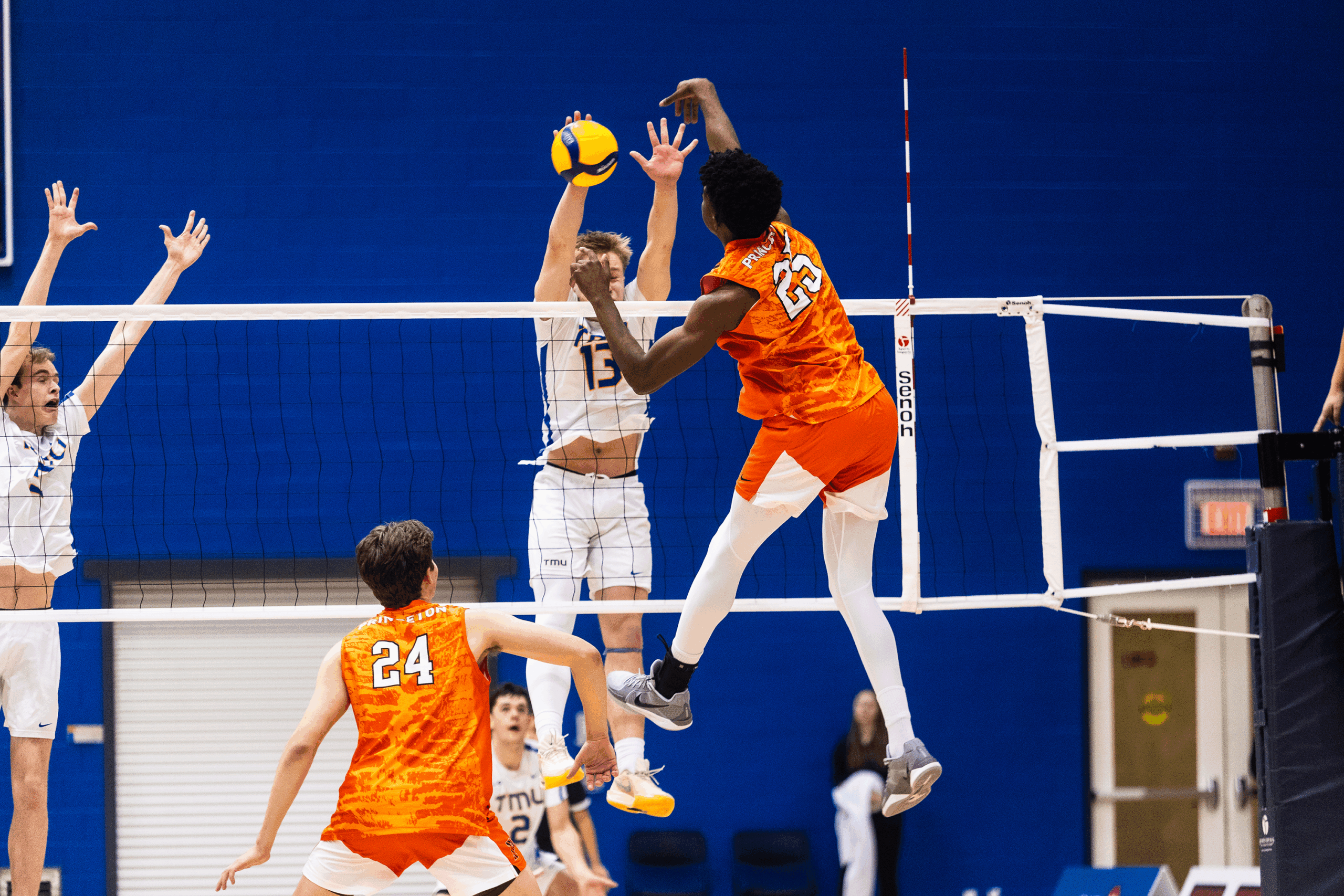With Ontario tuition fees the highest they’ve ever been, the Canadian Military is offering its young recruits a tempting incentive to enlist — a fully-financed post-secondary education. Photo editor Lauren Strapagiel takes a closer look at why some Ryerson students enlist and how it has changed their lives
It’s a Thursday night at Toronto’s Fort York Armoury and young men wearing fatigues are pulling themselves along a rope suspended over the parade floor. The complaints of a soldier experiencing testicular discomfort from the harness are muffled by an officers’ yell of encouragement .
Earlier in the day, many of these men were sitting in a university classroom. But now they’re dangling in the air and taking apart assault rifles. One night a week, all reservists with the Canadian Forces are required to train, a routine that has been a part of Corporal Jeremy Humphrey’s life since he was in high school.
Humphrey, a third-year urban planning student, signed up for the reserves in December 2006 and was placed with the Royal Regiment of Canada ( RRC), a reserve infantry regiment based out of Fort York.
Humphrey chose infantry as his trade because he says it’s the backbone of the military. “At the end of the day it’s the infantry that will get the job done,” says Humphrey. “It’s the nitty-gritty of being outside. It’s the sleeping outside. It’s dirty, cold, wet. It just had a certain appeal.”
Humphrey’s desire to serve his country coupled with a family history of military service — his grandfather was in a tank regiment in World War II — sparked his interest for a future career in the military. The information session he attended at Moss Park Armoury when he was in Grade 12 was the final push that led him to the Forces.
And while Humphrey joined the army on his own accord, his story highlights the Force’s recent attempts to recruit post-secondary students.
“There definitely has been as increase in our recruiting efforts,” says Major Frank Jeffrey, with regard to post-secondary students.
Jeffrey, who works with national affairs and recruiting with the Forces, says it’s beter for the army to train soldiers outside the Forces, in colleges or universities. This allows experienced officers to go where they are most needed rather than spend all their time conducting training sessions. With Canada facing wartime and a large generation of retiring officers, having soldiers train for their trade in an outside university frees up more resources. Jeffrey calls this “traning avoidance.”
The avoidance is paying off well for soldiers like Humphrey. As a reservist, $2,000 of his tuition is paid for each year he is enrolled, and a maximum of $8,000 is provided for his degree.
The Forces are paying full tuition for some 1,289 soldiers serving full-time, who will in turn owe twice the time they spent in school to the army in obligatory service, minus training done during the summer.
Free education and the promise of a career upon graduation is pretty good incentive to sign up, but Captain Rick Towey of the RRC says every soldier’s motivation for joining is different.
“You can’t stereotype soldiers, especially reserve soldiers,” says Towey. Soldiers sign up for a, “sense of duty, sense of adventure, sense of self-sacrifice, sense of contributing to the community,” amongst other reasons.
And according to Towey, there’s a reason why the army is particularly interested in student-aged recruits.
“It’s a very demanding role… especially the infantry, and we need people in the prime of their lives,” says 55-year-old Towey. “That’s young men in their late teens, early 20s, when they have the physical strength, energy and robustness to cope with military training.”
Towey, a police officer by day, joined the military in 1972 when he was still in high school. He stayed for a few years, left for university and re-enlisted in 1991 near the beginning of the Gulf War. This past May, he completed a tour in Afghanistan where he worked on improvised explosive device (IED) forensics.
As a reservist, being deployed is completely voluntary. For Captain Aida Gabriel, 38, a third-year film student at Ryerson, it was the next logical step in her military career.
“Yes, it’s volunteer in nature, but it’s something that you do,” she says. “You train for a particular job so you would like to fulfill that duty.”
That duty brought her to Bosnia from 1996 to 1997 and to Afghanistan for eight months in 2006. Like Towey and Humphrey, Gabriel also joined the military when she was in high school after recruiters came to her school. She was 16 and saw it as a “summer job.” But life with the RRC, where she was stationed, grew on her.
“That family bond doesn’t go away. I can walk in on a Thursday night and see all my friends, peers and colleagues and it’s just like a flashback to when you were walking in the building for the first time,” she says.
After high school, she went to York’s Glendon campus for economics and psychology but left after two and a half years for her tour in Bosnia. After dealing with riots in Titov Drvar, she returned to Canada a different person.
“It was definitely an experience that changed me, that made me grow more as an individual,” says Gabriel. “Anytime you’re overseas it’s totally different than if you’re training here in Petawawa.”
Her deployment in Afghanistan was again a change. Bosnia was a UN mission with an entirely different set of tactics and rules of engagement. Afghanistan, Gabriel says, was “incomparable.” A NATO mission run by the International Security Assistance Force, has a level of violence Gabriel hadn’t seen in Bosnia, especially the violence insurgents used against civilians. The intensity of her tour made the return to Canada all the more poignant than the first time.
“The first thing that you feel or see is the brightness of the city, the colours, the smells that are just not there when you’re in a different, intense environment,” she says. “There’s a good line in the Hurt Locker: ‘you know what’s missing here? Grass. There’s no grass here.’”
Upon return from a tour, soldiers go through a decompression period. “The military has recognized that the transition is not smooth,” says Gabriel. “It’s not always fun.”
Everyone brings back their own psychological baggage from a tour in Afghanistan. For Gabriel, as it is for many others, it was hard to shake the constant vigilance required in a warzone.
“You’re in such a high alert state, that’s one adjustment that I think a lot of people have to switch off,” she says. “That it’s okay and it’s safe to sleep.”
After her return, Gabriel switched to full-time service and then made her way to Ryerson for film studies.
Humphrey could be in Afghanistan right now had it not been for a freak bout of strep throat. Just after completing his first year at Ryerson, Humphrey put his name down to go to Afghanistan, but a summer of illness prevented him from attending training so he gave up his spot.
Humphrey says there’s a certain sense of excitement and history attached to deployment that drew him in. He says events like Remembrance Day are a particular reminder of that, when an array of old veterans gather, their chest full of medals and their minds full of stories.
“I think its something that’s exciting and that some people would like to experience. There is a military tradition within Canada that goes back many, many generations,” says Humphrey, “It’s not about going over there, carrying around my rifle and killing as many people as I possibly can.”
For now, Humphrey plans to finish school and pursue a career in urban planning, but he’s keeping the military in his back pocket. “It’s a part-time career and it’s something I’d always like to have there.”
Back at Fort York, Captain Towey gives a tour of the historic building. In the officer’s lounge, amongst hundreds of years of military mementos from tattered flags to a bison head mounted on the wall to portraits of military leaders of yore, is a connection to Ryerson. In the back corner of a shelf is a statuette dedicated to the memory of Captain George E. Ryerson, a relative of Egerton, Ryeron’s founder.
“The history of the Canadian army is also the history of Canada,” says Towey. The RRC has existed in some form since 1862 and the regiment can count participation in everything from the Battle of Fish Creek with Louis Riel (whose shotgun hangs in the regiment museum) to Vimy Ridge to Dieppe. There are about 20 Royals currently deployed in Afghanistan.
“The military embodies a lot of really great values. Duty, honour, self-sacrifice…” says Towey. “Unfortunately its all focused at death and killing. But take that away from it and it’s a very good, honourable place to be.”
Photo Illustration: Lauren Strapagiel











student
Yeah, let’s have students write stuff in support of killers and killing people. WTF?